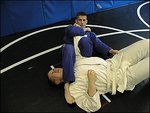I do martial arts (Brazlian Jiu-Jitsu [BJJ] and General striking [MMA]) and i want to increase my muscle mass and stength because it is rubbish at the moment. I've been advised by a few people who each have different opinions, i am wondering which one would be best in my suitation. Ok so a few details about me first.
Age: 18
Weight: 63kg (i need a gain on 6kg in 4 months)
Training: BJJ *3 days, MMA *1 day, Gym *2 days
Fitness: Good
I would say i am a beginner to weight training as i haven't done that much of it. The advise i got is:
Opinion 1: Do endurance training because it will increase my strength and muscle size quite quickly.
Opinion 2: Do power lifting (the Bill Starr 5x5 programme in particular) because it is very effective in increasing core strength and muscle mass. It can also be used to increase muscle mass quicker than usual.
Opinion 3: Do normal training because it concentrates more on building muscles rather than power or endurance.
Thanks
Age: 18
Weight: 63kg (i need a gain on 6kg in 4 months)
Training: BJJ *3 days, MMA *1 day, Gym *2 days
Fitness: Good
I would say i am a beginner to weight training as i haven't done that much of it. The advise i got is:
Opinion 1: Do endurance training because it will increase my strength and muscle size quite quickly.
Opinion 2: Do power lifting (the Bill Starr 5x5 programme in particular) because it is very effective in increasing core strength and muscle mass. It can also be used to increase muscle mass quicker than usual.
Opinion 3: Do normal training because it concentrates more on building muscles rather than power or endurance.
Thanks

